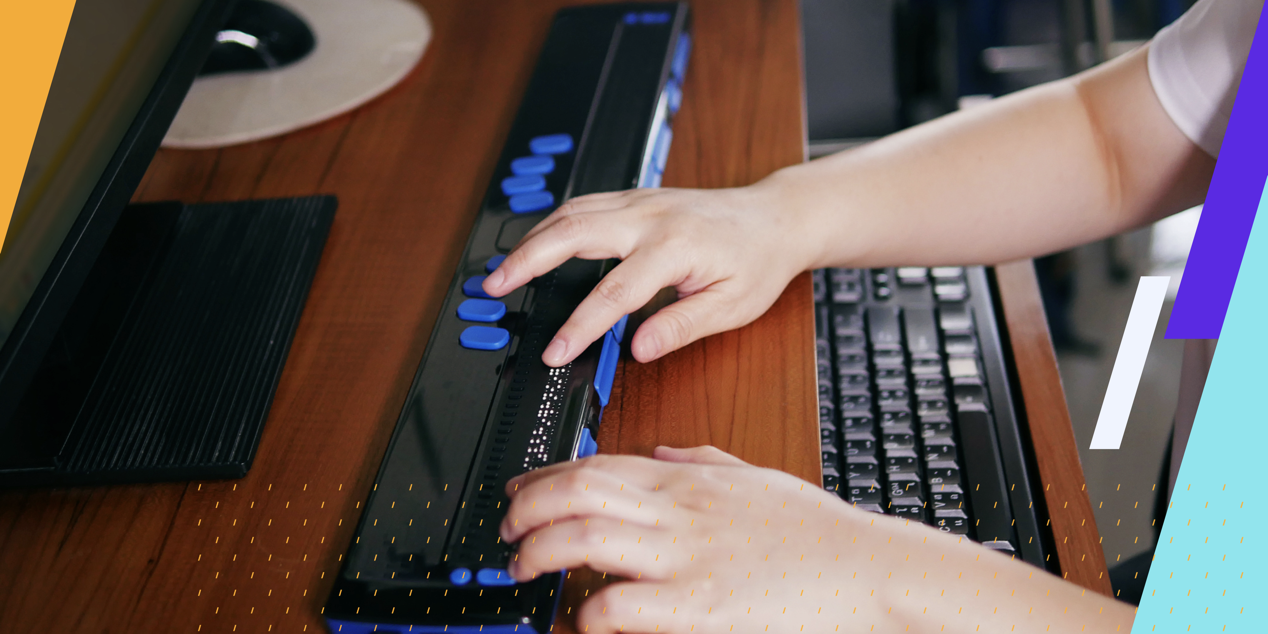Knowing how to read and write braille is a valuable skill, especially for people with vision loss who rely on braille to comprehend information and communicate. Braille keyboards and refreshable braille displays are two primary devices people use to read and write braille.
This blog post will explore five advantages of braille keyboards (and, by extension, braille itself).
Braille helps users to better understand how text is formatted
Learning braille allows blind and visually impaired people to understand how text is formatted on a page. Unlike listening to a screen reader, which narrates the contents of pages to users, braille documents teach people where text is located on different pages. This can lead to greater equality, as people with vision loss can experience text on pages like many sighted people.
For instance, understanding how braille is formatted can help manage bank statements written in braille. This greater equality can improve self-esteem among people with vision loss since they can fully engage with written text like most people. Of course, braille keyboards are often used to create braille documents.
Braille helps in learning highly visual content
Braille is helpful when learning highly visual content, such as in the fields of math and science. These areas of study often use symbols to illustrate concepts, etc.
Blind and visually impaired people who understand braille can use braille codes to understand the material being taught. As a result, braille is often necessary for people with vision loss to understand math and other highly visual materials.
Columns, tables, and charts can also be adapted for braille use.
More independence
Similar to providing increased access to written text, knowing braille allows for more independence for the blind and visually impaired.
For example, public places like airports or elevators often include braille signage. As a result, people who understand braille can know what signs are saying rather than possibly having to rely on others for instructions. Doing things yourself and not relying on others for assistance is much more efficient.
Medications and an increasing number of packaged foods usually have braille labeling. This allows blind and visually impaired people with braille to identify products quickly.
Tactile feedback
Physical Bluetooth-supported braille keyboards typically provide good tactile feedback. Tactile feedback primarily benefits people who are blind or have low vision. Using sensations, including vibrations and tactile feedback, helps users locate keys and lets users know when certain keys have been pressed.
Virtual braille keyboards also offer tactile feedback, which is less effective than physical ones.
Printed braille is another form of helpful tactile feedback, allowing the blind and visually impaired to “feel” the written text.
Professional benefits
Understanding braille has employment benefits as well. In addition to being able to use devices like braille notetakers to record lectures or meetings, blind and visually impaired people who can read and write braille are more likely to get jobs than those who do not have braille skills.
About 85% of adults who read braille are employed, according to The National Federation of the Blind. This could be because writing a braille note on a piece of paper quickly, for instance, is more efficient than writing braille on a computer. Employers may value these kinds of literary skills in the hiring process.
Questions about braille or braille keyboards?
If you have any braille-related questions, please don’t hesitate to contact us. We have a team of experts who are experienced in braille. Even though technological advancements have made it less common, knowing how to read and write braille is still essential, especially for individuals with vision impairments.

